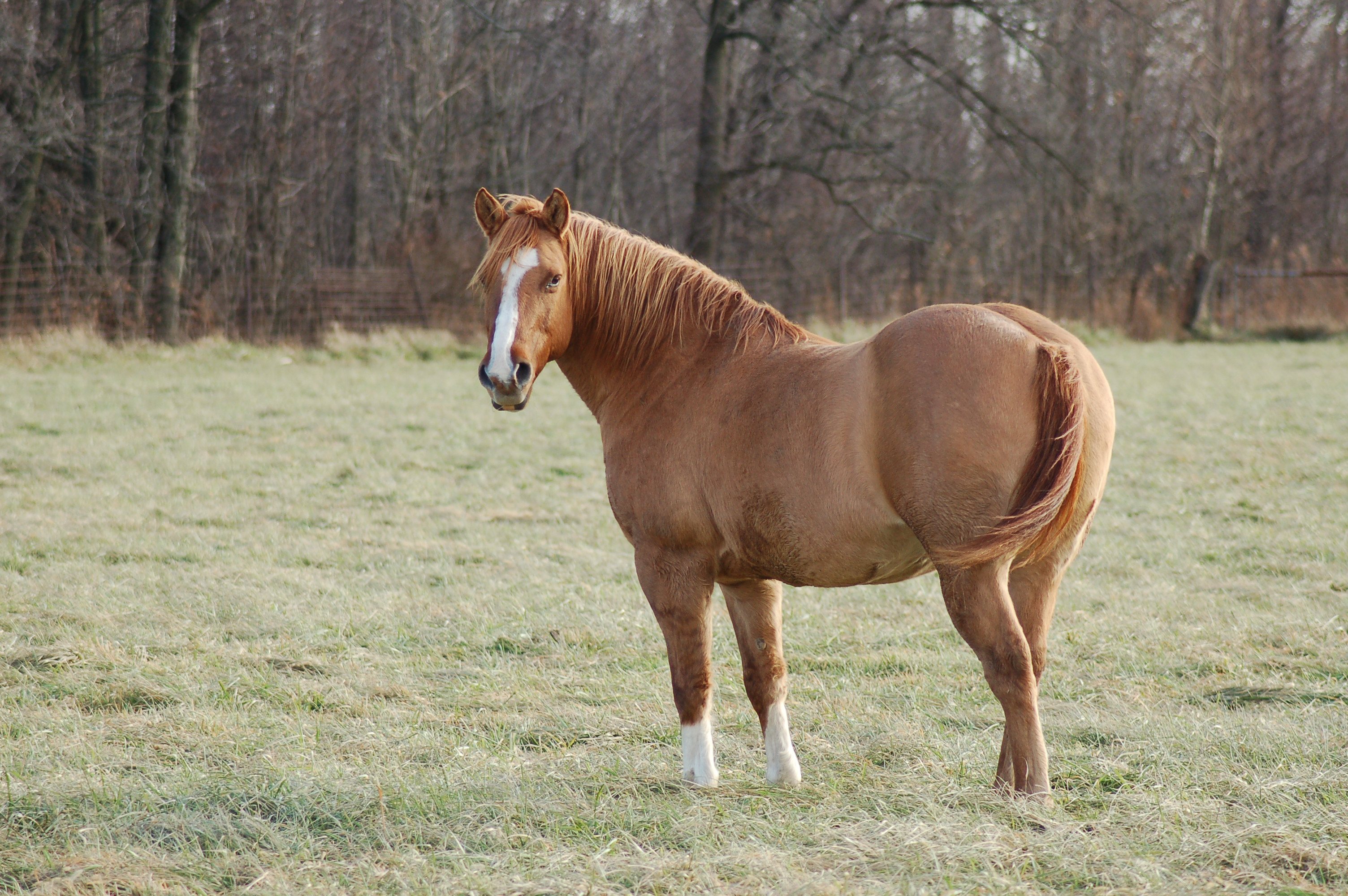When pasture is fattening
- August 3, 2023
- ⎯ Equus
British research suggests that pasture, rather than supplemental hay or grain, could be responsible for obesity in many horses and ponies.

The joint project, undertaken by the Equine Studies Group at the Waltham Centre for Pet Nutrition in Leicestershire and researchers at the University of Bristol, followed 96 horses from February through August of a single year. All horses had access to pasture for at least six hours per day (and many had access all day).
The researchers determined each horse’s body condition score (BCS) at the end of the winter and again at the end of the summer. They also sent a questionnaire to each horse’s owner to gather management information, including how the horse was exercised, the amount of any hay or grain provided in addition to the pasture, and the frequency of deworming.
Click here to learn why obesity isn’t necessarily a signs of laziness in horses.
The data showed that the percentage of obese horses and ponies rose from 27 percent at the end of winter to 35 percent at the end of summer. Somewhat surprisingly, however, the researchers found that supplemental feeding of hay and grain was not a major risk factor for obesity in the study horses, meaning that the calories derived from grazing pasture grass was the main driver for the weight gain in many animals.
“We often underestimate how many calories horses and ponies can get from pasture,” says Sarah Giles, MSc, who headed the study as part of her PhD work. “Other work that my Waltham colleagues have carried out has shown that ponies can eat up to 1 percent of their body weight in dry matter in just three hours out on certain pastures and up to 5 percent over 24 hours. This effectively means that at times a small pony could be eating as many calories as a racing Thoroughbred!”
A horse’s breed was the greatest predictor of obesity. Native ponies, such as the Welsh, were most at risk, followed by “cob type” horses. “Breed was the strongest risk factor in our study, and also the strongest risk factor in other studies since, [but] I don’t think this means owners can use their animals’ breed as an excuse not to manage obesity,” says Giles. “If anything, they should be aware that, based on evidence from this research, their horse or pony might be more likely to be obesity-prone and therefore ensure that they monitor weight more carefully and obtain expert nutritional advice from the outset. Preventive measures are far more effective than allowing a horse or pony to become obese in the first place.”
Finally, Giles points out, the horses who were more obese at the start of the study were less likely to have weight fluctuations as the months passed. “Our results suggest that the fatter a horse or pony is, the less seasonal variation he will have. These differences are likely due to additional physiological metabolic changes associated with obesity, so that when a horse is obese, he has a reduced calorie requirement for maintenance. Once horses and ponies are obese this weight can be very hard to shift—again highlighting the importance of preventive measures.”
Reference:“Obesity prevalence and associated risk factors in outdoor living domestic horses and ponies,” PeerJ, March 2014
This article first appeared in EQUUS issue #443.
Don’t miss out! With the free weekly EQUUS newsletter, you’ll get the latest horse health information delivered right to your in basket! If you’re not already receiving the EQUUS newsletter, click here to sign up. It’s *free*!





